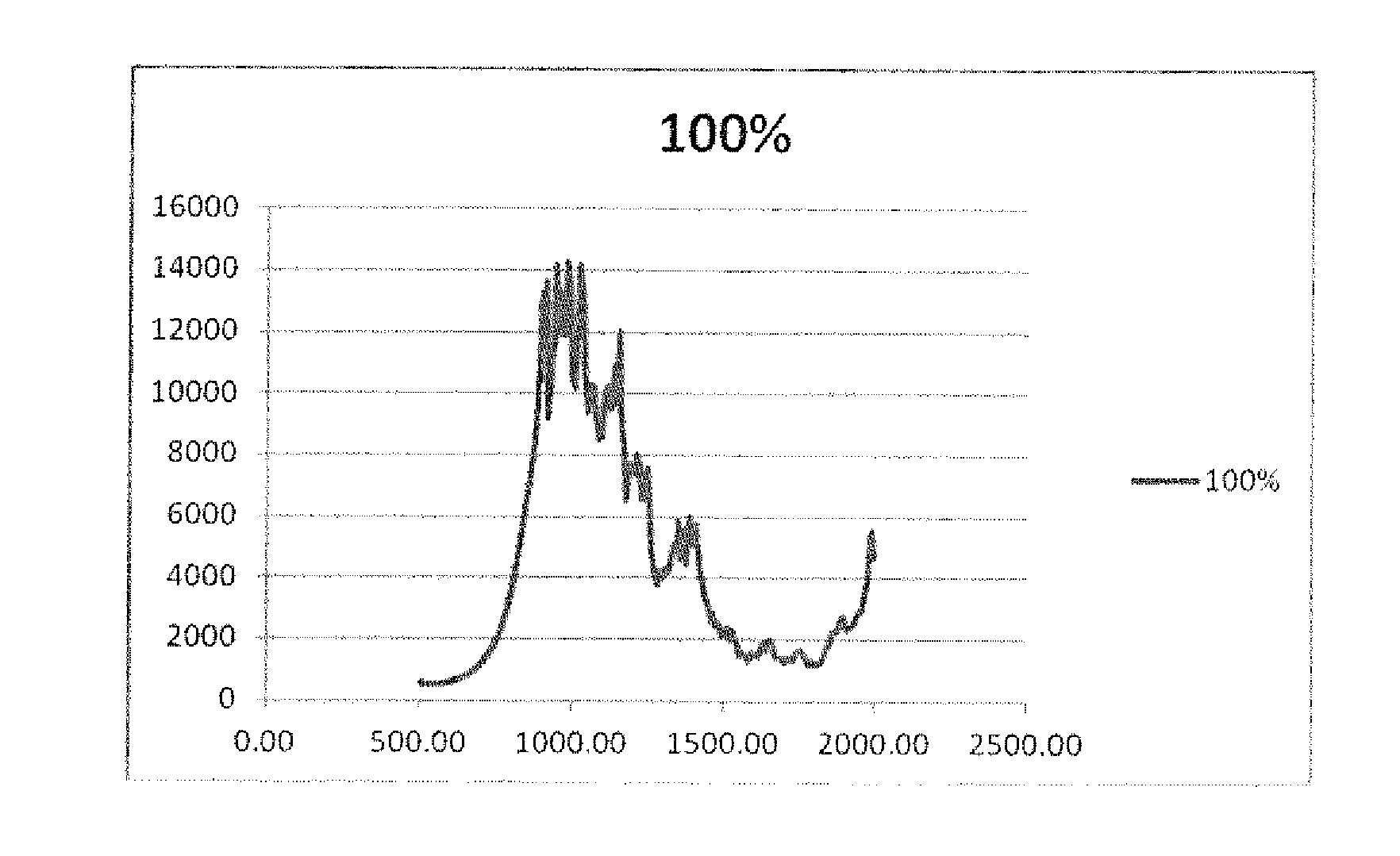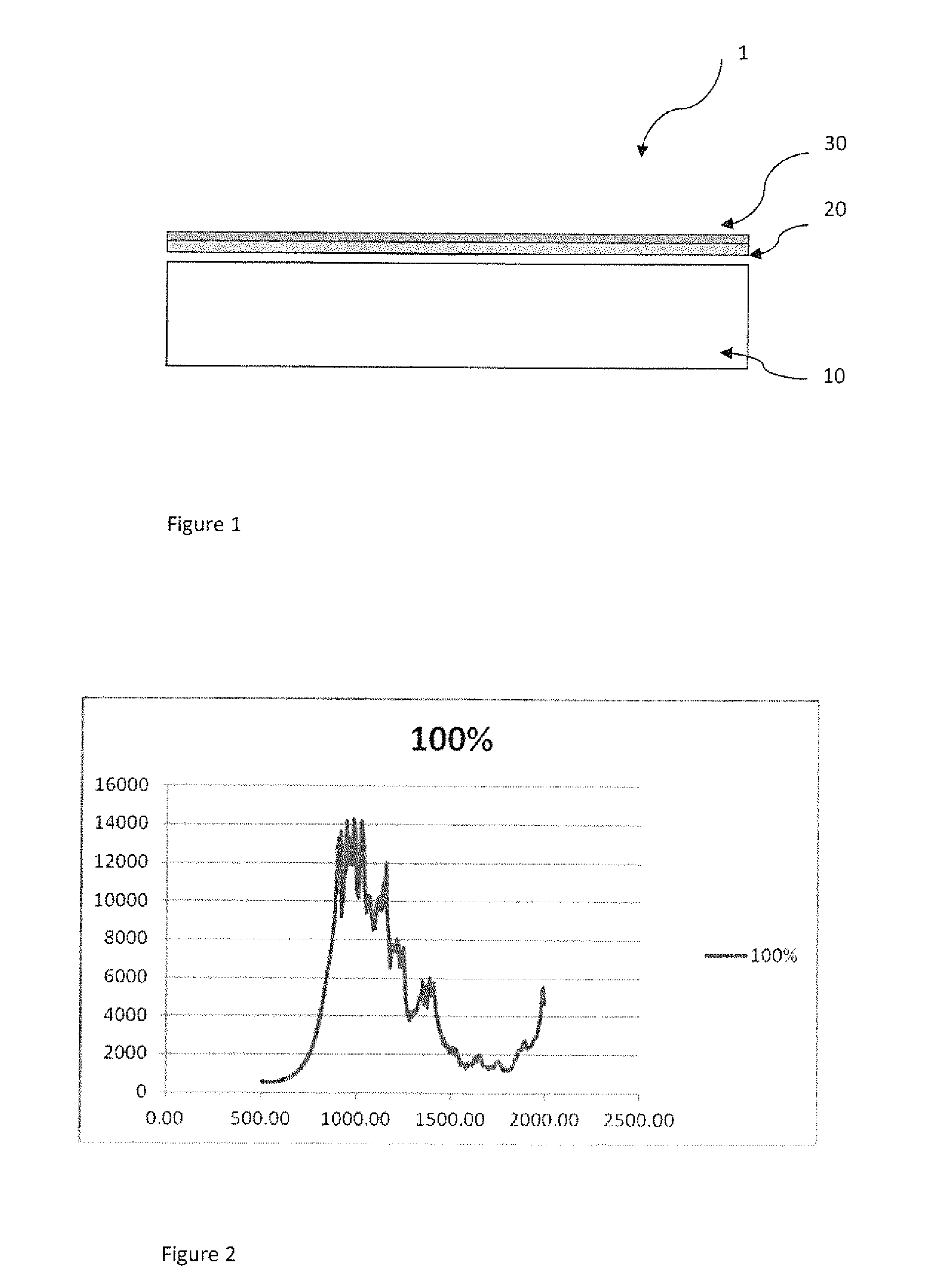Photovoltaic device and method of manufacture
a photovoltaic device and manufacturing method technology, applied in the direction of electrolytic capacitor manufacturing, final product manufacturing, sustainable manufacturing/processing, etc., can solve the problems of long thermal process, unsatisfactory production, and long process time, so as to improve the throughput potential of the manufacturing process and contribute greatly to the scaling potential of the technology.
- Summary
- Abstract
- Description
- Claims
- Application Information
AI Technical Summary
Benefits of technology
Problems solved by technology
Method used
Image
Examples
Embodiment Construction
[0029]FIG. 1 shows an electrode 1 according to an embodiment of the invention. The electrode is formed of a glass substrate 10 on which is deposited a fluorine doped tin oxide 20. Overlaying the fluorine doped tin oxide layer is a layer of chloroplatinic acid 30 (5 Mm H2PtCl6(H2O)6)in iso proply alcohol which enables the layer to flow across the fluorine doped layer such as fluorine doped tin oxide. The flourine doped tin oxide layer, which renders the glass electrically conductive, absorbs significantly in the NIR and this allows for the subsequent heating of the Pt—Cl via a heat transfer process.
[0030]The platinum chloride layer was then treated with near infra-red radiation with a wavelength of 800 to 1500 nm and preferably 800 nm to 1000 nm. Although the layer includes platinum it is envisaged that other platinum group metals such as nickel or palladium may be used.
[0031]As shown in FIG. 2, the radiation is in the NIR spectrum and not the visible spectrum. The use of electromagn...
PUM
| Property | Measurement | Unit |
|---|---|---|
| Time | aaaaa | aaaaa |
| Wavelength | aaaaa | aaaaa |
| Wavelength | aaaaa | aaaaa |
Abstract
Description
Claims
Application Information
 Login to View More
Login to View More - R&D
- Intellectual Property
- Life Sciences
- Materials
- Tech Scout
- Unparalleled Data Quality
- Higher Quality Content
- 60% Fewer Hallucinations
Browse by: Latest US Patents, China's latest patents, Technical Efficacy Thesaurus, Application Domain, Technology Topic, Popular Technical Reports.
© 2025 PatSnap. All rights reserved.Legal|Privacy policy|Modern Slavery Act Transparency Statement|Sitemap|About US| Contact US: help@patsnap.com



